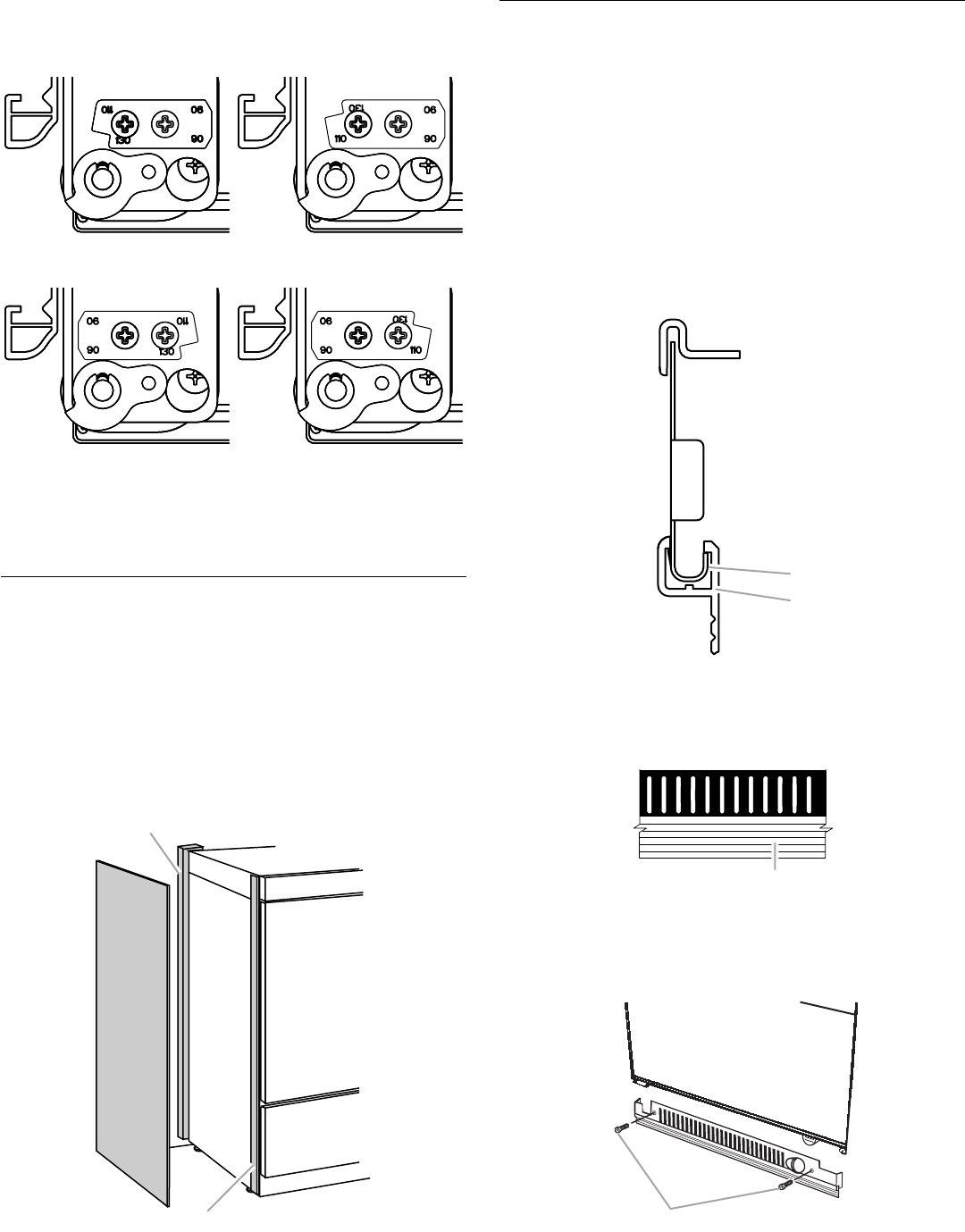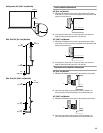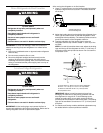
27
NOTE: For Overlay Series models, rout the hinge side of the
custom door panels to a radius that is equal to at least half the
thickness of the panel if a 130° door swing is desired.
7. Replace the door stop screws and tighten.
8. Check that the door can open freely.
Install Side Panel
If the built-in area depth is 25" (63.5 cm) or more, the side panels
can be installed inside the side trim or attached to the outside of
the side trim.
IMPORTANT: KitchenAid is not responsible for the removal or
addition of molding or decorative panels that would not allow
access to the refrigerator for service.
1. For the inside side trim piece, slide the front edge of the
routed side panel into the trim piece.
2. Nail the rear edge of the panel to the support board.
Install Base Grille
There are two pieces to the base grille to allow for a custom fit:
the base grille itself and the skirt. The skirt can be added to the
base grille in order to extend it all the way to the floor.
1. To see if the skirt is needed, place the base grille into
position. Do not attach the base grille to the refrigerator.
Measure the distance between the bottom of the base grille
and the floor. The gap must be a minimum of ¹⁄₂" (1.27 cm) in
order to add the skirt.
NOTE: If the gap measures less than ¹⁄₂" (1.27 cm), skip
steps 3 and 4 of the instructions, and install the base grille
only.
2. Remove the protective film from the base grille.
3. Snap the skirt onto the base grille.
4. Trim the skirt by scoring the proper “V” groove with a utility
knife. Break the skirt at the score line.
5. Using the two screws, attach the base grille assembly to the
refrigerator as shown.
NOTE: Drive in the right side screw first.
130° 110°
90° 90°
Left-hand as shown; Right-hand reversed
A.Support board
B.Side trim piece
A
B
A.Base grille
B.Skirt
A.“V” groove
A. Screws (2)
A
B
A
A


















